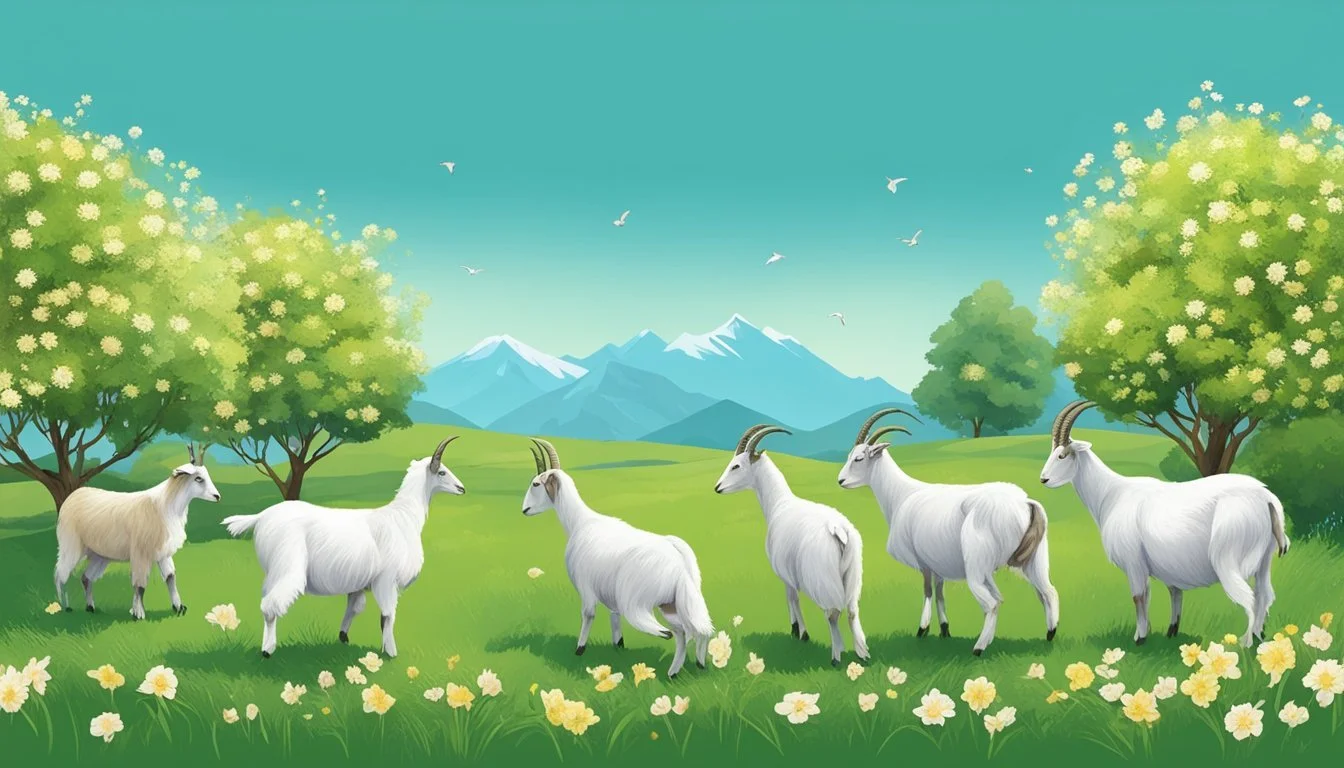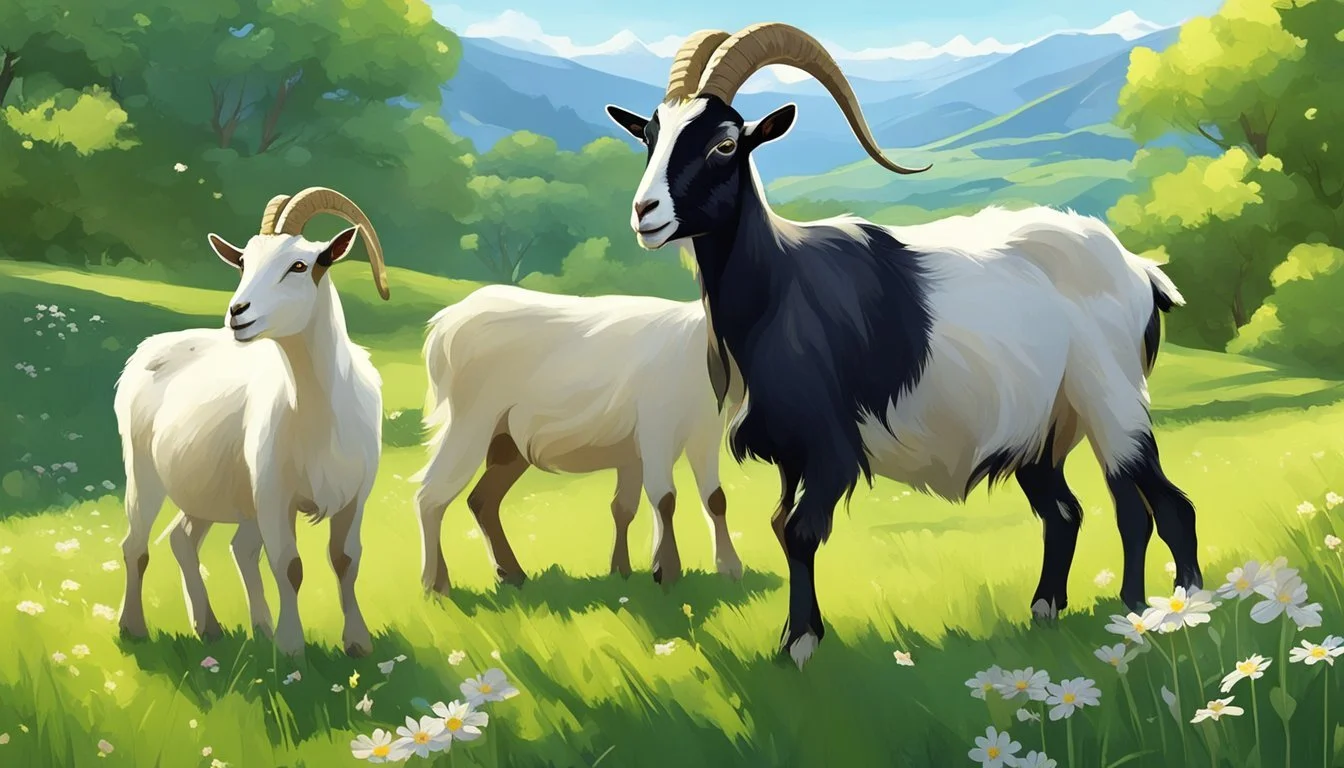The Impact of Seasonal Changes on Goat Milk Composition
Understanding Nutritional Variability
Goat milk is renowned for its nutritional quality and digestibility, boasting a composition that supports both direct consumption and a variety of dairy products. Seasonal changes, however, exert a notable influence on the physico-chemical characteristics of goat milk. Factors such as temperature fluctuations, humidity levels, and alterations in the goats' diet throughout the year can lead to variations in milk constituents like fat, protein, and lactose levels. These seasonal variations are especially evident in different breeds of dairy goats, such as the Saanen breed, known for its sensitivity to heat stress and climatic conditions.
Research has shown that these compositional shifts are not only influenced by the external environment but also by the internal physiological changes in the goats, including their lactation period. The milk of goats can vary significantly in composition throughout the different stages of lactation—early, mid, and late. Understanding the impact of these seasonal factors is critical for dairy farmers and the dairy industry to ensure the consistent quality and production of goat milk and its derivatives.
The nuanced understanding of how seasonal changes impact goat milk composition is essential for optimizing farming practices and improving product quality. This knowledge can inform selective breeding strategies, feeding regimens, and overall herd management, ultimately leading to more resilient dairy operations. The existing body of research, including studies on the Saanen goat milk composition, provides valuable insights into the complex interplay between environmental conditions and the quality of goat milk produced.
Overview of Goat Milk Composition
Goat milk is a nutritious alternative to cow's milk, offering a unique chemical composition that benefits various dietary needs and processing characteristics. This section provides an in-depth understanding of its composition, comparison with other milk types, and the nutritional advantages it presents.
Chemical Composition of Goat Milk
Goat milk is comprised of water, fat, proteins, lactose, minerals, and vitamins. The fat content is notable for its high levels of medium-chain fatty acids, which are easier to digest compared to the longer chains found in other milk types. The protein content in goat milk is rich in essential amino acids and slightly different from cow's milk, making it beneficial for people with allergies to cow milk proteins. It also contains non-fat dry matter, which includes minerals like calcium, phosphorus, potassium, and sodium, as well as vitamins C and E, zinc, and selenium.
Comparison to Other Milk Types
When compared to cow and sheep milk, goat milk is distinct in its nutritional profile. It typically has smaller fat globules and higher levels of some vitamins and minerals. A noticeable difference is its lower lactose content, making it a viable option for those with lactose sensitivities. Unlike cow milk, which has higher levels of saturated fatty acids, goat milk provides a healthier balance of these fatty acids.
Nutritional Quality and Benefits
Goat milk is often sought after for its nutritional quality. It is a good source of calcium, crucial for bone health, and contains fewer allergenic proteins, reducing the risk of allergic reactions. Nutrients found in goat milk are highly bioavailable, meaning they are easily absorbed by the body. Its consumption has been linked to various health benefits, including enhanced metabolic utilization of minerals and improved nutritional status in individuals.
Influence of Seasonal Changes
Seasonal changes have a direct impact on the composition of goat milk, including factors like fat content, protein levels, and overall yield. Understanding these variations and the role of climatic conditions helps in adapting management and feeding strategies to maintain milk quality throughout the year.
Seasonal Variations and Milk Properties
Goat milk composition fluctuates with seasonality. For instance, Saanen goat milk shows significant changes during different lactation periods, ranging from early to late. Research suggests that the milk yield tends to decrease towards the late lactation period, which coincides with an increase in both milk fat and protein content. This trend is often similar during the warmer summer months. These variations can affect dairy processing and the nutritional aspects of goat milk products.
Climatic Impact on Goat Milk
Climatic conditions, like the temperature humidity index, air temperature, relative humidity, and solar radiation duration, play a crucial role in determining the milk quality. Particularly, Saanen goats are susceptible to heat stress, with increasing temperatures leading to a decrease in the physico-chemical characteristics of the milk. Numerous studies have found that extreme heat, often experienced in summer, can lead to a decline in milk production and alterations in milk composition, thereby influencing the overall dairy farm profitability and sustainability.
Physiological Factors Affecting Milk Composition
The composition of goat milk is influenced by a variety of physiological factors, including the lactation period, breed, and stage of lactation. Each of these factors plays a significant role in determining both the quantity and quality of goat milk.
Lactation Period and Milk Quality
The lactation period significantly impacts the physico-chemical characteristics of goat milk. In particular, Saanen goat milk shows variability across different lactation periods. Research has found that milk produced at various stages—from early to late in the lactation period—varies in composition. For instance, a study has linked climatic conditions to seasonal variations of Saanen goat milk composition, indicating that the timing of milk production can affect its quality.
Breed Differences in Milk Traits
Differences in milk composition can also be attributed to the breed or genotype of the goat. Each breed possesses unique milk traits and characteristics, shaping the quality of goat milk. For example, certain breeds may naturally produce milk with higher fat content or varying protein levels. Understanding these differences is crucial in the dairy industry, especially when breeding goats for specific milk qualities.
Stage of Lactation
The stage of lactation directly correlates with the lactation curve and alters the milk's composition. As goats progress through the lactation stage, the milk yield typically declines, but the fat and protein content may increase. This link between milk yield and composition with the lactation stage is well-established and can predict animal performance to an extent. Notably, studies have discovered that the composition of goat milk changes due to various factors, including the stage of lactation.
Farm Management and Milk Composition
Effective farm management practices are pivotal in shaping the composition and quality of goat milk. These practices range from the diet provided to goats to the specific farming methods employed across various regions.
Dietary Influence on Milk Composition
Diet plays a critical role in determining the fatty acid profile and digestibility of goat milk. Goats that feed on a balanced diet that includes sufficient energy, proteins, and minerals produce milk with a higher nutritional value. For instance, a diet high in fresh forage increased the levels of beneficial fatty acids like linoleic and α-linolenic acids in the milk.
Urea levels in milk, an indicator of protein utilization efficiency, are directly influenced by the protein content in a goat's diet.
Fatty acid profile: Diets rich in polyunsaturated fatty acids result in milk with a healthier fatty acid composition.
Effect of Grazing on Quality
Grazing habits significantly influence milk quality because the natural pasture a goat feeds on can alter its milk's composition.
Natural pasture: Grazing on diverse pastures, as opposed to single grass varieties, might lead to milk with a wider range of fatty acids.
Grazing vs. indoor feeding: Goats that graze tend to produce milk with higher levels of naturally occurring antioxidants and desirable fatty acids compared to goats fed indoors.
Farm Practices in Different Regions
Farm management practices vary across different regions, with each having distinct effects on the composition of goat milk.
Europe: In regions such as France, Spain, Greece, and Italy, goat farming practices are often adapted to the climatic and geographical conditions.
For example, in Spain, the extensive grazing systems in the dehesa landscapes result in milk with unique flavors associated with the region's flora.
Mediterranean region: The warm climate allows for extended grazing seasons, potentially influencing milk quality with a higher degree of unsaturated fatty acids.
Each practice, from the diet to the grazing strategy, and the innate uniqueness of regional farms affect the overall quality and characteristics of goat milk.
Processing and Storage of Goat Milk
In the dairy industry, processing and storage are critical factors that influence the quality and longevity of goat milk. Specifically, heat treatment and storage conditions, including temperature, play pivotal roles in determining the final quality of dairy products made from goat milk.
Heat Treatment Effects
Heat treatment is a standard practice in milk processing, primarily used to ensure product safety






